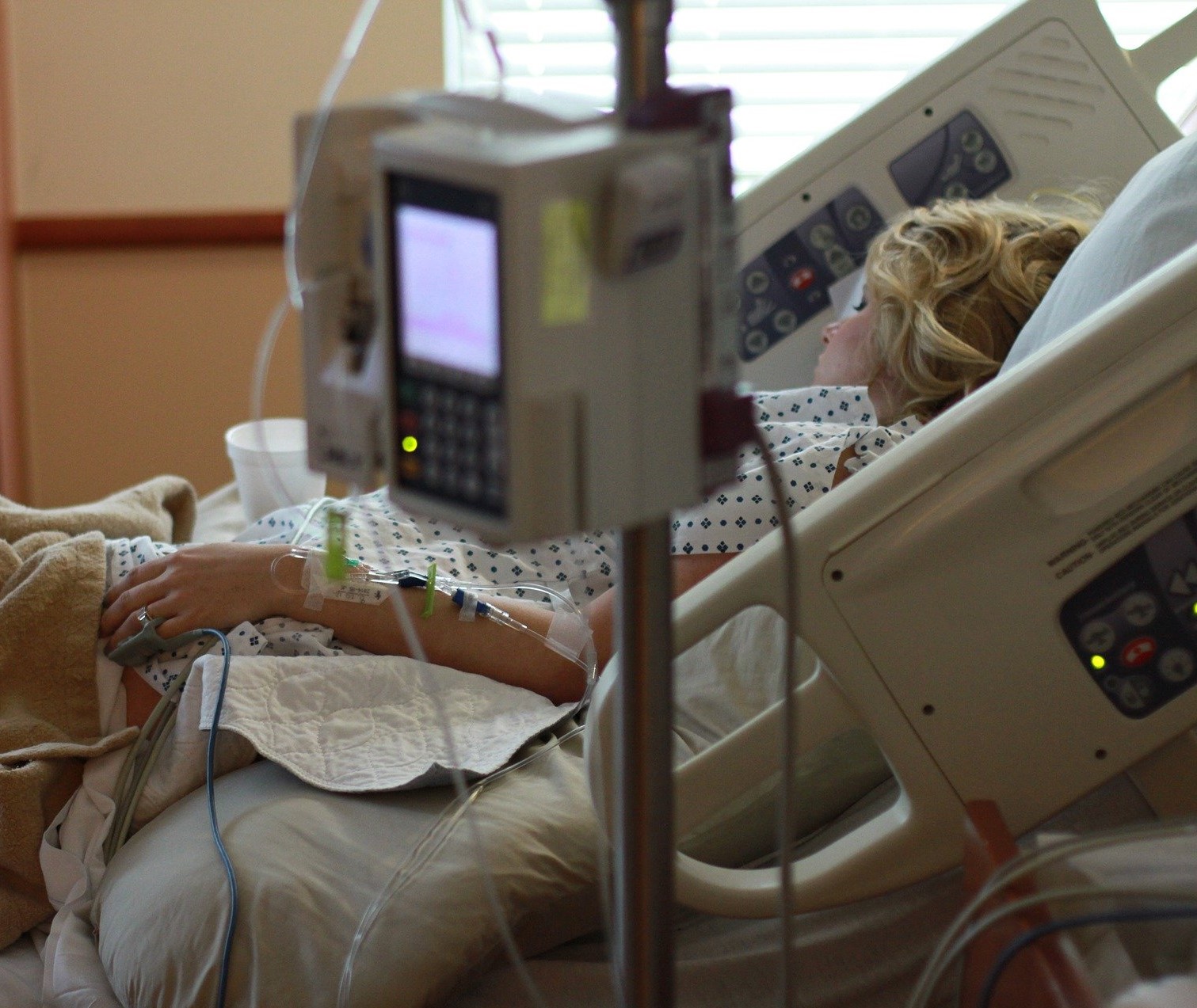Damage control in the intensive care unit: what should the intensive care physician know and do?
Abstract
When trauma patients are admitted into the intensive care unit after undergoing damage control surgery, they generally present some degree of bleeding, hypoperfusion, and injuries that require definitive repair. Trauma patients admitted into the intensive care unit after undergoing damage control surgery can present injuries that require a definite repair, which can cause bleeding and hypoperfusion. The intensive care team must evaluate the severity and systemic repercussions in the patient. This will allow them to establish the need for resuscitation, anticipate potential complications, and adjust the treatment to minimize trauma-associated morbidity and mortality. This article aims to describe the alterations present in patients with severe trauma who undergo damage control surgery and considerations in their therapeutic approach. The intensivist must detect the different physiological alterations presented in trauma patients undergoing damage control surgery, mainly caused by massive hemorrhage. Monitor and support strategies are defined by the evaluation of bleeding and shock severity and resuscitation phase in ICU admission. The correction of hypothermia, acidosis, and coagulopathy is fundamental in the management of severe trauma patients.
Authors
Downloads
Keywords
- Damage control
- Hemorrhagic shock
- Resuscitation
- Hypothermia
- Blood Coagulation Disorders
- Hemorrhage
- Critical Care
- Intensive Care Units
- Acidosis
References
Rotondo MF, Schwab CW, McGonigal MD, Phillips GR 3rd, Fruchterman TM, Kauder DR, Latenser BA, Angood PA: 'Damage control': an approach for improved survival in exsanguinating penetrating abdominal injury. J Trauma 1993, 35:375-382. discussion 382-3. https://doi.org/10.1097/00005373-199309000-00008
Shapiro MB, Jenkins DH, Schwab CW, Rotondo MF: Damage control: collective review. J Trauma 2000, 49:969-978. https://doi.org/10.1097/00005373-200011000-00033
Scalea TM, Boswell SA, Scott JD, Mitchell KA, Kramer ME, Pollak AN: External fixation as a bridge to intramedullary nailing for patients with multiple injuries and with femur fractures: damage control orthopedics. J Trauma 2000, 48:613-621. discussion 621-3. https://doi.org/10.1097/00005373-200004000-00006
Rotondo MF, Bard MR: Damage control surgery for thoracic injuries. Injury 2004, 35:649-654. https://doi.org/10.1016/j.injury.2004.03.002
Tien HC, Spencer F, Tremblay LN, Rizoli SB, Brenneman FD: Preventable deaths from hemorrhage at a level I Canadian trauma center. J Trauma 2007, 62(1):142-146. https://doi.org/10.1097/01.ta.0000251558.38388.47
Brohi K, Singh J, Heron M, Coats T: Acute traumatic coagulopathy. J Trauma 2003, 54(6):1127-1130. https://doi.org/10.1097/01.TA.0000069184.82147.06
Djaldetti M, Fishman P, Bessler H, Chaimoff C. pH-induced platelet ultrastructural alterations. A possible mechanism for impaired platelet aggregation. Arch Surg. 1979;114:707-710. https://doi.org/10.1001/archsurg.1979.01370300061009
Thorsen K, Ringdal KG, Strand K, Soreide E, Hagemo J, Soreide K: Clinical and cellular effects of hypothermia, acidosis and coagulopathy in major injury. Br J Surg 2011, 98:894-907. https://doi.org/10.1002/bjs.7497
Lier H, Krep H, Schroeder S, Stuber F. Preconditions of hemostasis in trauma: a review. The influence of acidosis, hypocalcemia, anemia, and hypothermia on functional hemostasis in trauma. J Trauma. 2008;65(4):951-960. https://doi.org/10.1097/TA.0b013e318187e15b
Rutherford EJ, Morris JA Jr, Reed GW, Hall KS. Base deficit stratifies mortality and determines therapy. J Trauma. 1992;33:417-423. https://doi.org/10.1097/00005373-199209000-00014
Jurkovich GJ, Greiser WB, Luterman A, Curreri PW. Hypothermia in trauma victims: an ominous predictor of survival. J Trauma. 1987;27:1019 -1024. https://doi.org/10.1097/00005373-198709000-00011
Johnston TD, Chen Y, Reed RL. Functional equivalence of hypothermia to specific clotting factor deficiencies. J Trauma. 1994; 37:413- 417 https://doi.org/10.1097/00005373-199409000-00014
Kempainen RR, Brunette DD: The evaluation and management of accidental hypothermia. Respir Care 2004, 49:192-205.
Kurz A, Sessler DI, Lenhardt R: Perioperative normothermia to reduce the incidence of surgical-wound infection and shorten hospitalization. Study of Wound Infection and Temperature Group. N Engl J Med 1996, 334:1209-1215. https://doi.org/10.1056/NEJM199605093341901
Seamon MJ, Wobb J, Gaughan JP, Kulp H, Kamel I, Dempsey DT: The effects of intraoperative hypothermia on surgical site infection: an analysis of 524 trauma laparotomies. Ann Surg 2012, 255:789-795. https://doi.org/10.1097/SLA.0b013e31824b7e35
Hoffman M, Monroe DM. Coagulation 2006: a modern view of hemostasis. Hematol Oncol Clin North Am. 2007;21:1-11. https://doi.org/10.1016/j.hoc.2006.11.004
Eberst ME, Berkowitz LR. Hemostasis in renal disease: pathophysiology and management. Am J Med. 1994;96:168 -179. https://doi.org/10.1016/0002-9343(94)90138-4
Varon D, Dardik R, Shenkman B, et al. A new method for quantitative analysis of whole blood platelet interaction with extracellular matrix under flow conditions. Thromb Res. 1997;85:283-294. https://doi.org/10.1016/S0049-3848(97)00014-5
McLoughlin TM, Fontana JL, Alving B, Mongan PD, Bu¨nger R. Profound normovolemic hemodilution: hemostatic effects in patients and in a porcine model. Anesth Analg. 1996;83:459-465. https://doi.org/10.1213/00000539-199609000-00003
Hardy JF, de Moerloose P, Samama M. Massive transfusion and coagulopathy: pathophysiology and implications for clinical management. Can J Anesth. 2004;51:293-310. https://doi.org/10.1007/BF03018233
Spahn DR. Hypocalcemia in trauma: frequent but frequently undetected and underestimated. Editorial. Crit Care Med. 2005; 33:2124 -2125. https://doi.org/10.1097/01.CCM.0000174479.32054.3D
Fukuda T, Nakashima Y, Harada M, et al. Effect of whole blood clotting time in rats with ionized hypocalcemia induced by rapid intravenous citrate infusion. J Toxicol Sci. 2006;31:229 -234. https://doi.org/10.2131/jts.31.229
Vivien B, Langeron O, Morell E, et al. Early hypocalcemia in severe trauma. Crit Care Med. 2005;33:1946 -1952. https://doi.org/10.1097/01.CCM.0000171840.01892.36
Barry GD. Plasma calcium concentration changes in hemorrhagic shock. Am J Physiol. 1971;220:874-879. https://doi.org/10.1152/ajplegacy.1971.220.4.874
Hastbacka J, Pettila V. Prevalence and predictive value of ionized hypocalcemia among critically ill patients. Acta Anaesthesiol Scand. 2003;47:1264 -1269 https://doi.org/10.1046/j.1399-6576.2003.00236.x
Barbee RW, Reynolds PS, Ward KR: Assessing shock resuscitation strategies by oxygen debt repayment. Shock 2010, 33:113-122. https://doi.org/10.1097/SHK.0b013e3181b8569d
Wang CH, HsiehWH, Chou HC, et al. Liberal versus restricted fluid resuscitation strategies in trauma patients: a systematic review and meta-analysis of randomized controlled trials and observational studies. Crit Care Med 2014;42(04):954-961 https://doi.org/10.1097/CCM.0000000000000050
Guly HR, Bouamra O, Spiers M, Dark P, Coats T, Lecky FE; Trauma Audit and Research Network. Vital signs and estimated blood loss in patients with major trauma: testing the validity of the ATLS classification of hypovolaemic shock. Resuscitation 2011;82(05):556-559 https://doi.org/10.1016/j.resuscitation.2011.01.013
Abou-Khalil B, Scalea TM, Trooskin SZ, Henry SM, Hitchcock R: Hemodynamic esponses to shock in young trauma patients: need for invasive monitoring. Crit Care Med 1994, 2: 633-639. https://doi.org/10.1097/00003246-199404000-00020
Scalea TM, Maltz S, Yelon J, Trooskin SZ, Duncan AO, Sclafani SJ: Resuscitation of multiple trauma and head injury: role of crystalloid fluids and inotropes. Crit Care Med 1994, 22:1610-1615. https://doi.org/10.1097/00003246-199410000-00017
Meregalli A, Oliveira RP, Friedman G: Occult hypoperfusion is associated with increased mortality in hemodynamically stable, high-risk, surgical patients. Crit Care 2004, 8:R60-R65. https://doi.org/10.1186/cc2423
Blow O, Magliore L, Claridge JA, Butler K, Young JS: The golden hour and the silver day: detection and correction of occult hypoperfusion within 24 hours improves outcome from major trauma. J Trauma 1999, 47:964-969. https://doi.org/10.1097/00005373-199911000-00028
Davis JW, Shackford SR, Mackersie RC, Hoyt DB: Base deficit as a guide to volume resuscitation. J Trauma 1988, 28:1464-1467. https://doi.org/10.1097/00005373-198810000-00010
Abramson D, Scalea TM, Hitchcock R, Trooskin SZ, Henry SM, Greenspan J: Lactate clearance and survival following injury. J Trauma 1993, 35:584-588. discussion 588-9. https://doi.org/10.1097/00005373-199310000-00014
McNelis J, Marini CP, Jurkiewicz A, Szomstein S, Simms HH, Ritter G, Nathan IM: Prolonged lactate clearance is associated with increased mortality in the surgical intensive care unit. Am J Surg 2001, 182:481-485. https://doi.org/10.1016/S0002-9610(01)00755-3
Stensballe J, Henriksen HH, Johansson PI. Early haemorrhage control and management of trauma-induced coagulopathy: the importance of goal-directed therapy. Curr Opin Crit Care. 2017 Dec;23(6):503-510. https://doi.org/10.1097/MCC.0000000000000466
Ostrowski SR, Henriksen HH, Stensballe J, et al. Sympathoadrenal activation and endotheliopathy are drivers of hypocoagulability and hyperfibrinolysis in trauma: a prospective observational study of 404 severely injured patients. J Trauma Acute Care Surg 2017; 82:293-301. https://doi.org/10.1097/TA.0000000000001304
Johansson PI, Henriksen HH, Stensballe J, et al. Traumatic endotheliopathy: a prospective observational study of 424 severely injured patients. Ann Surg 2017; 265:597-603. https://doi.org/10.1097/SLA.0000000000001751
Shaz BH, Winkler AM, James AB, et al. Pathophysiology of early traumainduced coagulopathy: emerging evidence for hemodilution and coagulation factor depletion. J Trauma 2011; 70:1401-1407 https://doi.org/10.1097/TA.0b013e31821266e0
Fries D, Innerhofer P, Schobersberger W: Time for changing coagulation management in trauma-related massive bleeding. Curr Opin Anaesthesiol 2009, 22:267-274. https://doi.org/10.1097/ACO.0b013e32832678d9
Shere-Wolfe RF, Galvagno SM Jr, Grissom TE. Critical care considerations in the management of the trauma patient following initial resuscitation. Scand J Trauma Resusc Emerg Med. 2012 Sep 18;20:68. https://doi.org/10.1186/1757-7241-20-68
Schochl H, Maegele M, Solomon C, Gorlinger K, Voelckel W: Early and individualized goal-directed therapy for trauma-induced coagulopathy. Scand J Trauma Resusc Emerg Med 2012, 20:15. https://doi.org/10.1186/1757-7241-20-15
Wray JP, Bridwell RE, Schauer SG, Shackelford SA, Bebarta VS, Wright FL, Bynum J, Long B. The diamond of death: Hypocalcemia in trauma and resuscitation. Am J Emerg Med. 2021 Mar;41:104-109 https://doi.org/10.1016/j.ajem.2020.12.065
Cannon JW. Hemorrhagic Shock. N Engl J Med. 2018 Jan 25;378(4):370-379. https://doi.org/10.1056/NEJMra1705649
Curry N, Brohi K. Surgery in Traumatic Injury and Perioperative Considerations. Semin Thromb Hemost. 2020 Feb;46(1):73-82. https://doi.org/10.1055/s-0039-1697932
Schafer N, Driessen A, Frohlich M, et al. ; TACTIC partners. Diversity in clinical management and protocols for the management of major bleeding of trauma patients across European level 1 Trauma Centres. Scand J Trauma Resusc EmergMed 2015;23:74 https://doi.org/10.1186/s13049-015-0147-6
Holcomb JB, Tilley BC, Baraniuk S, et al; PROPPR Study Group. Transfusion of plasma, platelets, and red blood cells in a 1:1:1 vs a 1:1:2 ratio and mortality in patients with severe trauma: the PROPPR randomized clinical trial. JAMA 2015;313(05):471-482 https://doi.org/10.1001/jama.2015.12
Abou-Khalil B, Scalea TM, Trooskin SZ, Henry SM, Hitchcock R: Hemodynamic responses to shock in young trauma patients: need for invasive monitoring. Crit Care Med 1994, 22:633-639. https://doi.org/10.1097/00003246-199404000-00020
Sperry JL, Minei JP, Frankel HL, West MA, Harbrecht BG, Moore EE, Maier RV, Nirula R: Early use of vasopressors after injury: caution before constriction. J Trauma 2008, 64:9-14. https://doi.org/10.1097/TA.0b013e31815dd029

Copyright (c) 2021 Universidad del Valle

This work is licensed under a Creative Commons Attribution-NonCommercial 4.0 International License.
The copy rights of the articles published in Colombia Médica belong to the Universidad del Valle. The contents of the articles that appear in the Journal are exclusively the responsibility of the authors and do not necessarily reflect the opinions of the Editorial Committee of the Journal. It is allowed to reproduce the material published in Colombia Médica without prior authorization for non-commercial use

 https://orcid.org/0000-0002-2552-8958
https://orcid.org/0000-0002-2552-8958


















